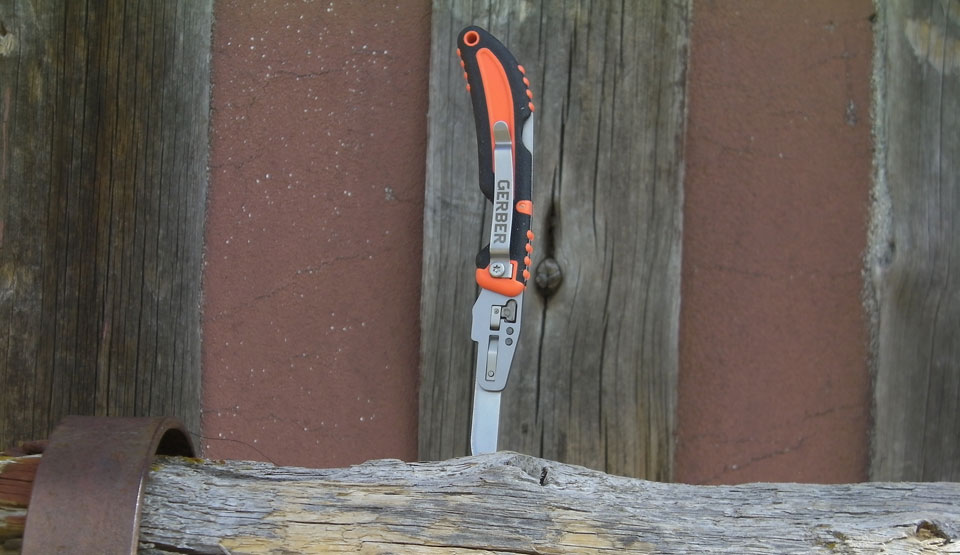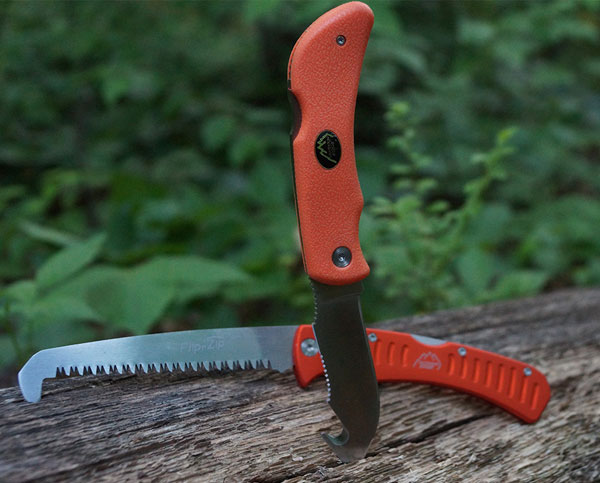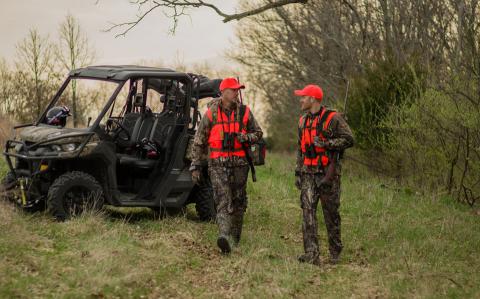Hunters often spend many hours and dollars finding the best tool to bring down their game of choice. And rightfully so because your weapon is an essential tool. Just as important, though, are the ancillary tools used during your hunting experience. Gear such as your blinds and stands, packs, GPS and even clothing impact the overall quality of your hunting experience. One of your most critical tools is your hunting knife.
The right knife makes safe, easy, effective work of whatever it is that you’re trying to accomplish and is comfortable to carry and use. With proper care and maintenance, your hunting knife will last through many hunting seasons, even into the next generation of hunters in your family.
Finding a hunting knife can feel daunting because so many different styles and materials are available. There's no such thing as the perfect all-purpose hunting knife. Many different kinds of hunting knives exist, each designed with a specific function in mind. Below is a list of tips to help you wade through all that information and make a knowledgeable purchasing decision.
1. Think about how you'll use your knife

The first question you should ask yourself is: “What do I expect this knife to do?” Hunting involves many activities: tracking, first-aid, brush removal, field dressing, transporting game and building a campsite. The knife you use to remove branches from around your tree-stand or cut the rope used to hang your quarry probably won't be the one you use to skin your game or eat with.
Common types of knives are:
- Boning and fillet knives are used to remove meat from the carcass. Fillet knives generally refer to fish, but they can be used interchangeably. The blade of these knives is narrow and flexible to maneuver as close to the bone as possible and also fit into small crevices like those around the shoulders, ankles and ribs.
- Camp knives are a general-purpose knife used for many things around the campsite. They're usually quite large.
- Caping knives ensure the neck of your trophy is preserved. They have a short blade that's curved slightly upward so you can make a smooth cut.
- Gut hooks simplify the process of removing the game’s organs. A small incision can be made in the animal’s abdomen and then the hook is used to “unzip" the skin without penetrating too deep.
- Skinning knives usually have a short, thin, curved blade that's good at cutting through the skin without damaging underlying muscle and tissues, or the hide.
2. Consider what game you’re hunting

Game comes in a range of sizes from thick-skinned boar of Florida, large bass of Lake Erie, to small-framed squirrel and rabbit of Tennessee and the massive moose of northern Alaska. You wouldn't use the same knife to clean and prepare all those species–after all, a large Bowie knife would be cumbersome to use on a rabbit, but infinitely useful for a moose. Knowing what game you're after will help you choose the size and shape of your hunting knife.
Fixed-blade knives are highly reliable and easy to clean. They're sturdy and can be used for general camp purposes or using on large game. Fixed-blade knives, though, tend to be bulkier than their folding counterparts, often getting in the way when sitting or climbing.
Folding knives, or pocket knives, are easier to carry than their fixed-blade counterparts because they're smaller overall. The same-sized blade is concealed on a folding style knife making it less cumbersome. These are easy to open, even with one hand, but they aren't as strong as fixed blades. Folding blades are more difficult to clean because fluids and materials get caught in the blade channels.
Four basic blade shapes exist: clip point, drop point, sheepsfoot and spear point. Each has its own set of advantages and disadvantages.
Clip point blades have a concave back and fine point that are good for making small punctures and working in detailed motions.
Drop point blades have a convex back and fine point. These are good for skinning because there's less chance of puncturing too deeply.
Sheepsfoot is the traditional shape of pocket knife blades. Its straight edge and rounded tip are good for general cutting, especially on flat surfaces, but not as useful for preparing a game carcass.
Spear point blades are a hybrid of the clip and drop point shapes. They have a speared shaped tip, sharp on both sides. These are easy to control and strong but have a small cutting edge. They're primarily used for slicing.
3. What type of environment will you be working in?

Where you use your knife determines what materials are used to construct it. For example, knives used near salt water or in a humid environment need different qualities than those used in dry areas. Saltwater and humid environments damage a knife more quickly than other settings so you'll want materials that can withstand the harsher treatment. In wet environments, you'll also want a knife that is easy to grip and won't slip out of your hand.
Knives are available with several combinations of blade and handle materials. The quality of steel used to create your blade is the most critical component and will determine its strength, durability, sharpness and required maintenance. A good rule of thumb to remember when you buy a knife is “when you invest in a knife, make sure you invest in its steel.”
Common steels used for blades include:
- 420HC is high carbon stainless steel found in lots of older knives. It's not as hard as some other steels, so it's easy to sharpen.
- 440C is stainless steel with a high chromium content. The chromium makes it highly resistant to corrosion. This material also holds its edge well and is very tough.
- 1095 is non-stainless steel that holds an edge well and is strong but rusts easily. It requires frequent lubrication and proper storage.
- AUS-8 is a stainless steel with added vanadium for extra hardness. It's capable of extremely sharp edges but dulls quickly and needs frequent sharpening.
- Sandvik 12C27 has a medium carbon content with extra chromium. When heat-tested, it can provide a sharp, strong edge. This material also resists rust and is relatively easy to maintain.
Your knife's handle largely determines how easy it will be to use and maneuver. Some materials may look sleek but aren't suitable for actual use. For example, Micarta and polished woods are exquisite but get slippery as you sweat, or they encounter fluids from the game carcass. Traditional materials such as bone and antler can be costly. Modern plastics are engineered for strength, easy cleaning and maximum grip.






























